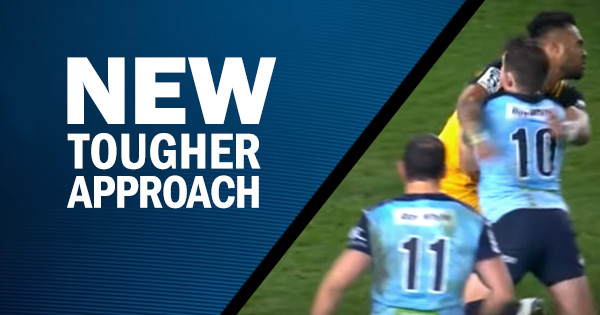
World Rugby have today announced that as of 3 January 2017, they will be adopting a tougher approach towards players making contact with the head. The new guidelines will fall into two clear categories, one being reckless, and the other being accidental.
The sport’s governing body want to strenghten their commitment to injury prevention, however, they have stated that injuries in the game are not on the rise.
They would like everyone involved in rugby to become part of a proactive approach towards reducing the risk of injury for all players.
World Rugby have redefined illegal (high) tackle categories and have increased sanctions to deter dangerous tackles from taking place.
This new law application guideline, which will effectively lower the acceptable height of tackles, will apply to all levels of the game from early next year.
The approach, approved by the World Rugby Council after extensive expert, independent and union evaluation, combines with new disciplinary sanctions and a re-focus of match officials on dangerous play. It will provide a package of measures that aims to change culture in the sport to ensure that the head is a no-go area.
“Rugby is a physical sport and there will always be a level of injury risk associated with it but the sport is doing as much as it can to make it as safe as possible,” said Ireland prop Tadhg Furlong.
World Rugby Chief Medical Officer Dr Martin Raftery added: “World Rugby is committed to playing a leading role in the sporting head injury agenda and continues to drive forward evidence-based strategies in education, prevention, management and research that are proving successful in protecting players at all levels of the sport.”
From 3 January, two new categories of dangerous tackles will carry penalty offences to deter and eradicate high tackles:
Reckless tackle
A player is deemed to have made reckless contact during a tackle or attempted tackle or during other phases of the game if in making contact, the player knew or should have known that there was a risk of making contact with the head of an opponent, but did so anyway.
This sanction applies even if the tackle starts below the line of the shoulders. This type of contact also applies to grabbing and rolling or twisting around the head/neck area even if the contact starts below the line of the shoulders.
Minimum sanction: Yellow card
Maximum sanction: Red card
Accidental tackle
When making contact with another player during a tackle or attempted tackle or during other phases of the game, if a player makes accidental contact with an opponent’s head, either directly or where the contact starts below the line of the shoulders, the player may still be sanctioned. This includes situations where the ball-carrier slips into the tackle.
Minimum sanction: Penalty
World Rugby will support this initiative with a global awareness and education programme.
More info here »
Sign In